China is using a series of steel structures to lay claim to a disputed area of the Yellow Sea, South Korea has claimed.
Seoul is considering setting up countermeasures to three Chinese installations erected off the west coast of the Korean Peninsula.
South Korea’s Foreign Ministry expressed ‘deep concern’ over what some experts have referred to as an encroachment on their territorial waters.
Satellite images show that the sea rig has been installed in an area where the two nations’ exclusive economic zones overlap.
The structure, which is an old French oil rig with a helicopter landing pad, is located near the Chinese Shenlan-1 and Shenlan-2 platforms.
They are all built in the Yellow Sea, which serves as a vital corridor for trade, fisheries and military navigation.
South Korean officials said they conveyed their concerns to Chinese officials during a scheduled meeting on Wednesday.
Beijing have insisted the structure is a fish farm support facility and dismissed any notion that it has to do with territorial rights.

Satellite imagery of a Chinese structure in the provisional measures zone in the Yellow Sea
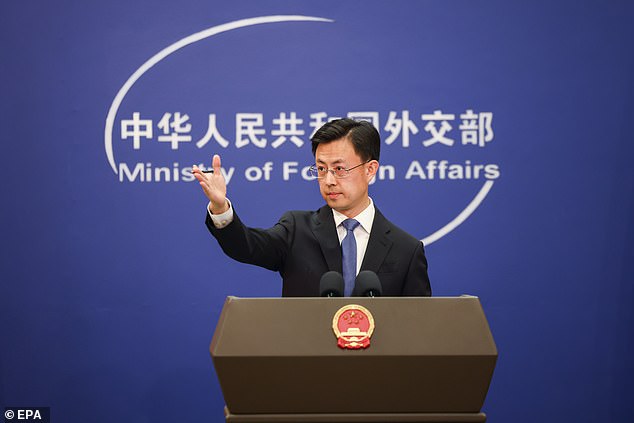
Chinese Foreign Ministry spokesman Guo Jiakun said yesterday that the facility was ‘in compliance with domestic and international law,’ and ‘unrelated to bilateral maritime delimitation’
Chinese Foreign Ministry spokesman Guo Jiakun said yesterday that the facility was ‘in compliance with domestic and international law,’ and ‘unrelated to bilateral maritime delimitation.’
‘The construction does not contravene the agreement between China and South Korea,’ Guo told reporters, adding that Beijing was ‘willing to work with Seoul to enhance dialogue and communication and properly address relevant issues.’
‘The structure is within both Chinese and international law and does not violate the China-South Korea fisheries agreement,’ the Chinese embassy in Seoul said in a statement last month.
But South Korea’s public broadcaster KBS have reported that Seoul’s survey vessels have been prevented from approaching the strcutures by the Chinese coast guard.
There are now growing worries among South Korean politicians and anti-Beijing campaigners that China is quietly infringing on foreign territory.
Luke De Pulford, the Executive Director of the Inter-Parliamentary Alliance on China, told MailOnline: ‘Beijing pretends not to be expansionist yet expends huge resources making ludicrous claims to other countries’ territories and international waters.
‘The Second Thomas Shoal, South China Sea, and now this. If we fail to deter this aggression, we will only have ourselves to blame when escalation follows.’
The structures are located in the provisional measures zone, a disputed area where, under an agreement signed in 2001, fishing boats are permitted to operate.
The agreement, however, expressly forbids the construction of facilities as well as searching for or developing natural resources in the area.
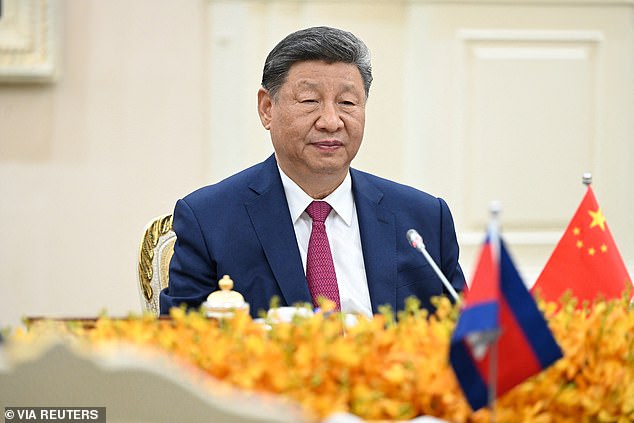
There are now growing worries among South Korean politicians and anti-Beijing campaigners that China is quietly infringing on foreign territory
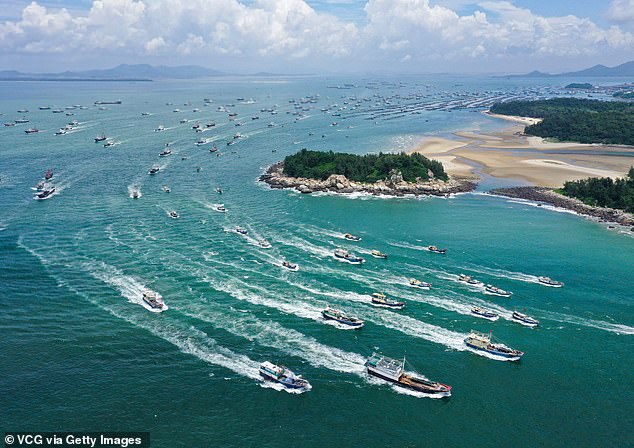
Beijing have insisted the structure is a fish farm support facility and dismissed any notion that it has to do with territorial rights
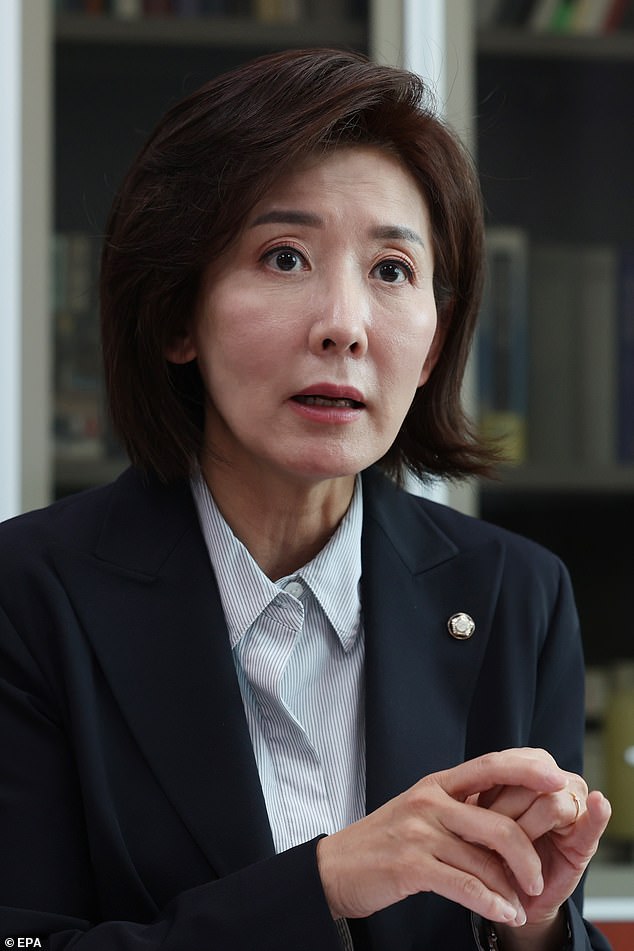
Na Kyung-won, a member of parliament from South Korea’s ruling People Power Party, said: ‘What China is doing — installing artificial structures in disputed waters and blocking access — is a gangster-style tactic used in the South and East China Seas’
In 2020, Beijing unilaterally declared the zone to be its ‘internal waters’.
Na Kyung-won, a member of parliament from South Korea’s ruling People Power Party, said: ‘What China is doing — installing artificial structures in disputed waters and blocking access — is a gangster-style tactic used in the South and East China Seas.
‘It’s clear they are now trying to turn the Yellow Sea into a grey zone to support their territorial claims.
‘A firm and stern response is needed to address China’s unfair attempts to change the status quo.’
In 2014, China sparked similar fury after a Chinese oil platform carried out drilling within Vietnam’s exclusive economic zone in the disputed Paracel Islands in the South China Sea.
After a standoff between the two nations, China withdrew the platform a month earlier than originally planned.
Beijing has also anchored large buoy’s within Japan’s exclusive economic zone, claiming they are weather and ocean monitoring devices.
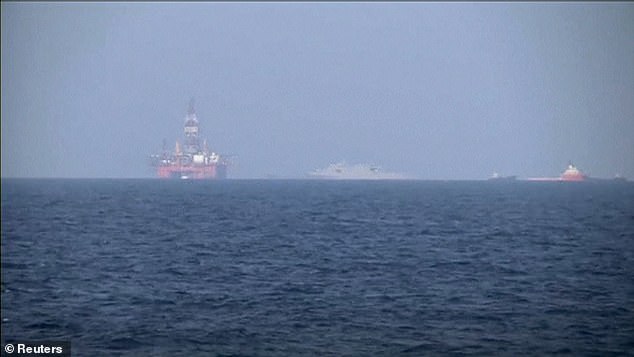
In 2014, China sparked similar fury after a Chinese oil platform carried out drilling within Vietnam’s exclusive economic zone in the disputed Paracel Islands in the South China Sea
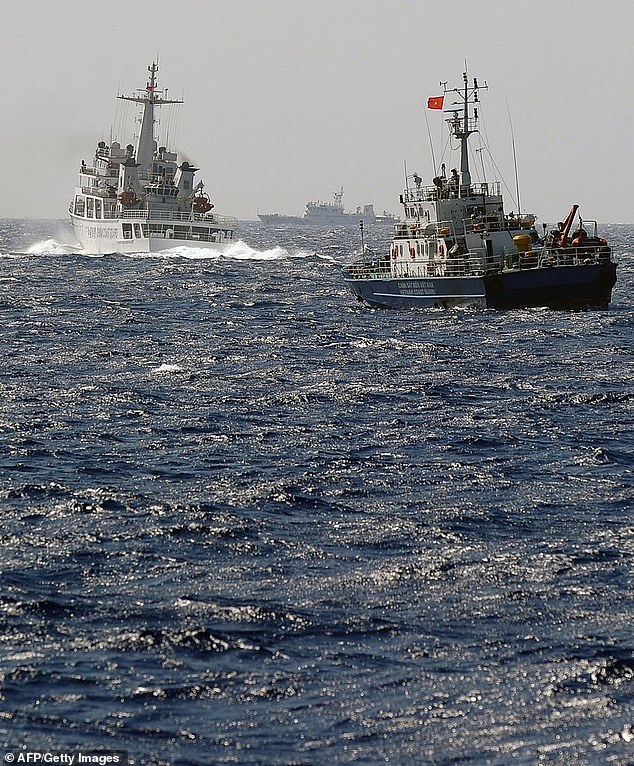
After a standoff between the two nations, China withdrew the platform a month earlier than originally planned
‘This is a clandestine tactic to claim our waters inch by inch and restrict the operations of the US-South Korea alliance,’ Jaewoo Choo, head of the China Research Center at the Korea Research Institute for National Security think-tank in Seoul, told the Financial Times.
Nam Sung-wook, a professor at the Graduate School of Public Administration at Korea University, added: ‘We should have taken action sooner.
‘If any country doesn’t respond to such territorial issues immediately, it becomes a fait accompli.’
Both countries agreed to continue consultations on the matter at all levels, with a mutual understanding that the issue should not hinder broader bilateral relations, Seoul’s Foreign Ministry said.
Last month UK Foreign Secretary David Lammy said: ‘We are concerned by dangerous and destabilising activities by China in the South China Sea.
‘The UK and world economy depends on these trade routes being safe and secure.’







